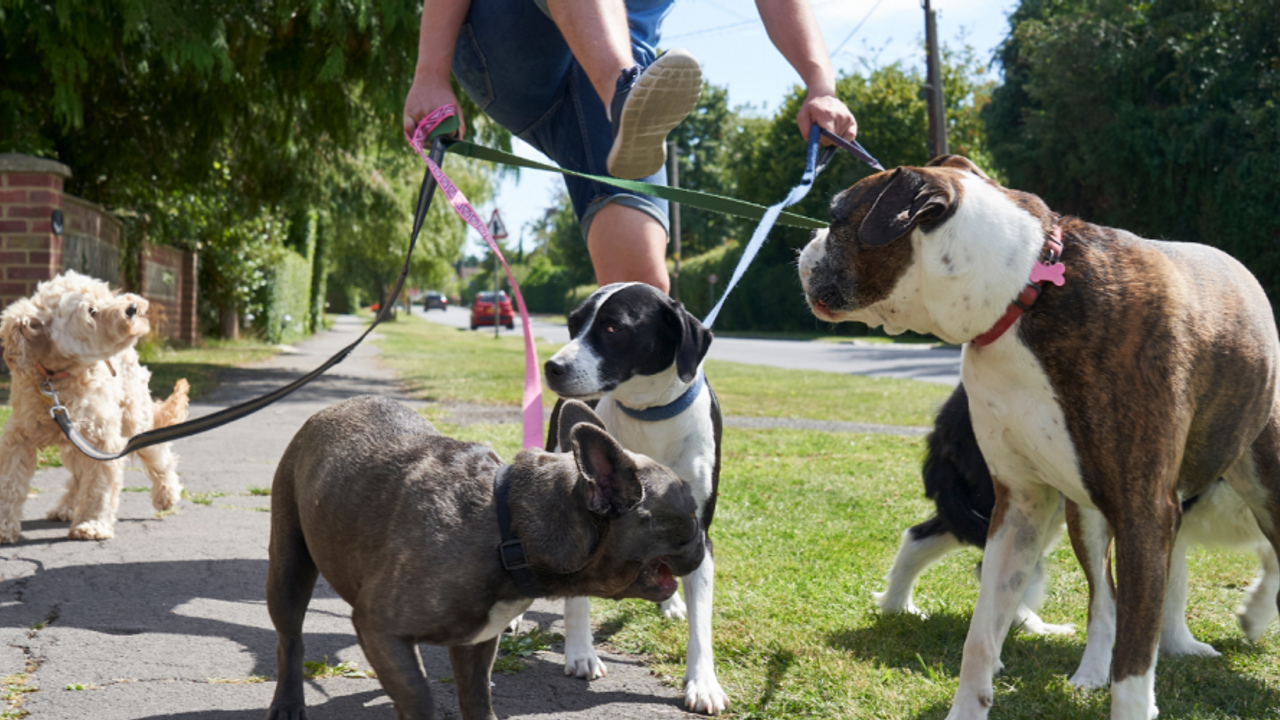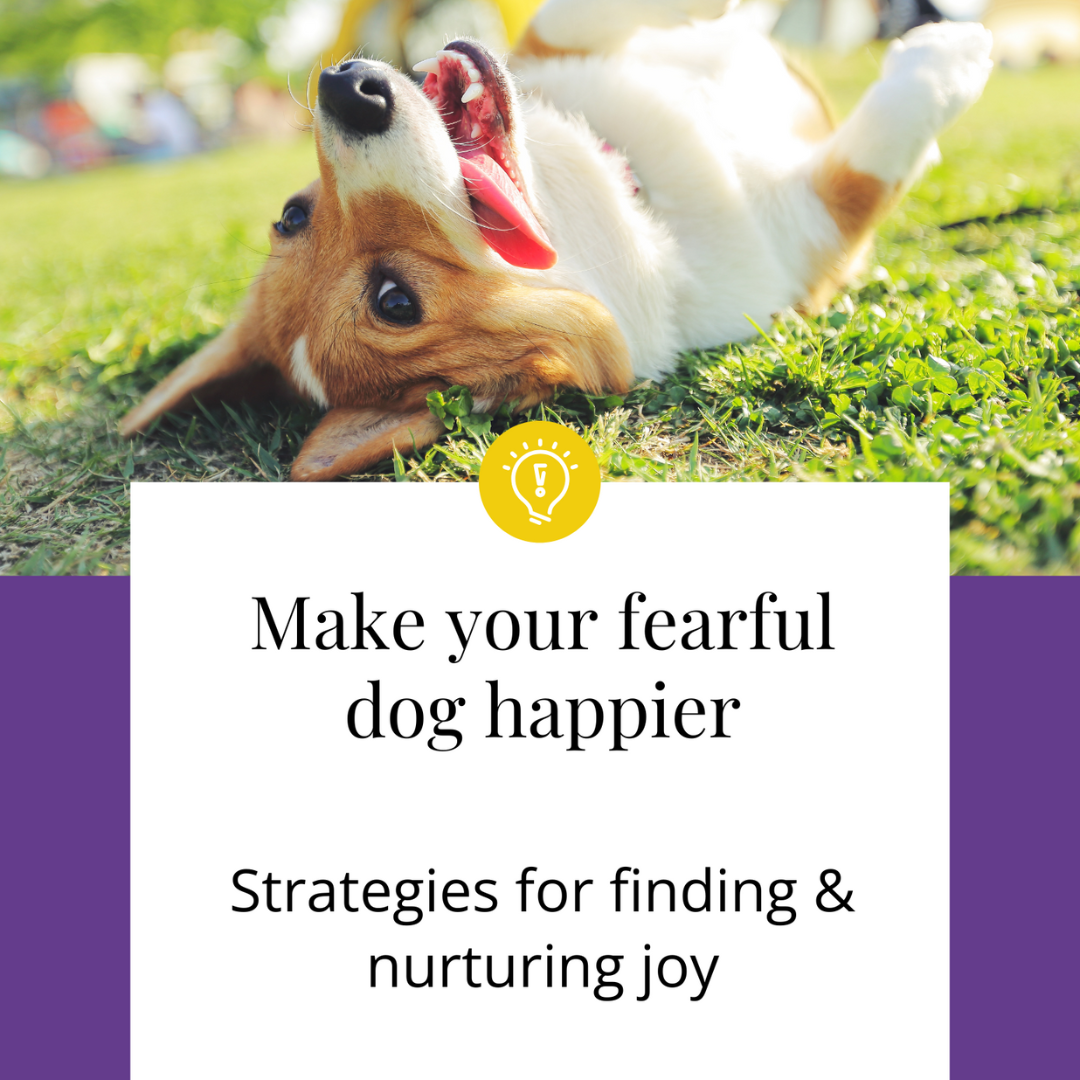
Walking two dogs together when one is reactive can be a challenge. In Part 1 of this series, we covered training steps you can practice out on walks when you have two people to work with, one to handle each dog. In Part 2, we showed you how to teach your dog to wait their turn for treats so that you can train them together more easily. This week, we’re getting into the nitty-gritty details of handling two leashes at once, without ending up sitting on the sidewalk.
What kind of gear do I need to walk two dogs at once?
For the most part, you don’t need any special equipment when walking two dogs together. Whether walking one or more dogs, we recommend no-pull harnesses, treat bags with high-value food or toys, deterrent spray (for charging dogs), and regular 6-foot leashes. The only additional piece of equipment that we find helpful when handling multiple dogs, is a leash belt. This is a sturdy, wide, usually nylon belt that you can thread through the leash handles and fasten around your waist. A leash belt can provide a nice backup if you happen to fumble and drop one or both leashes.
Now, if you have a bad back or are unsteady on your feet, a leash belt might not be a good idea. You can’t just drop the leashes if your dog lunge, which means you might end up being pulled over. So weigh the pros and cons of a leash belt for yourself before opting to use one.
Holding Two Leashes
There isn’t one “right” way to hold leashes, but in this week’s video we show you what we prefer for our own dogs, and what we teach in our online reactive dog course:
1) Place your thumb through the leash handles. Don’t wrap the leashes around your wrist or hand. The leash handles should be in the hand that is on the opposite side of your body from where the dogs are walking. This means that both dogs are on the same side of you, rather than one on each side. Not everyone prefers this setup, but it’s what we find easiest for changing directions quickly- which you often want to do when you are walking a reactive dog!;
2) Fold in any leash slack into the hand that has the leash handles;
3) Keep your hand (the one holding the leash handles) near your belly button, at your center of gravity;
4) The hand on the same side of your body as the dogs can be lower down on the leashes to give you more control of how much “play” in the leashes the dogs have to work with.
Changing Directions with Two Dogs
Keeping your second hand- the one not holding the leash handles- lower on the leashes is especially helpful when turning while holding two leashes. This means you can keep the leashes up from underfoot, and use them to guide the dogs through the turn if you need to.
Giving Treats to Two Dogs While Walking
Whether walking one dog or two, make sure to transfer any leash slack you’re holding up in the hand you use to deliver treats, to the other hand before reaching for treats. If you just drop the leash slack to free up your hand to grab treats, you can end up tripping over leashes underfoot.
If you try these tips and have success, or trouble, we want to hear from you. Join our Facebook group and post your questions or comments there, or reach out to us by email at [email protected]!
Looking for more help? Check out our online, self-paced course for reactive dogs!
Categories


Wondering how to help your fearful dog be happier? Grab this free worksheet, complete with video links to a case study, to find out!


Community
We offer a free private Facebook support group for owners of fearful dogs to connect and share their stories. Join us there.


